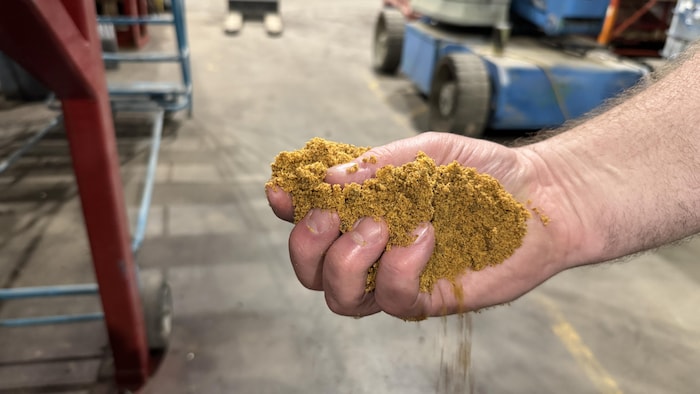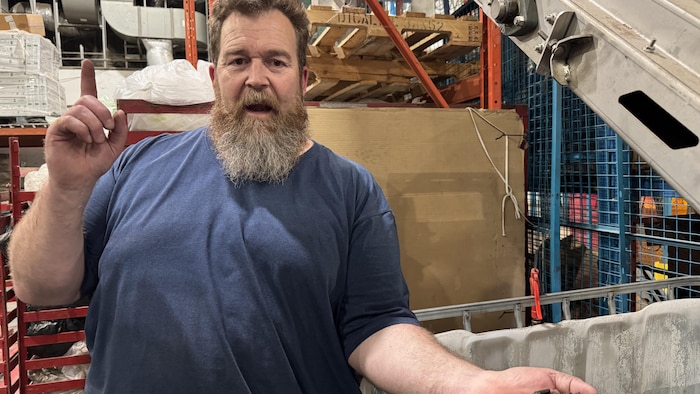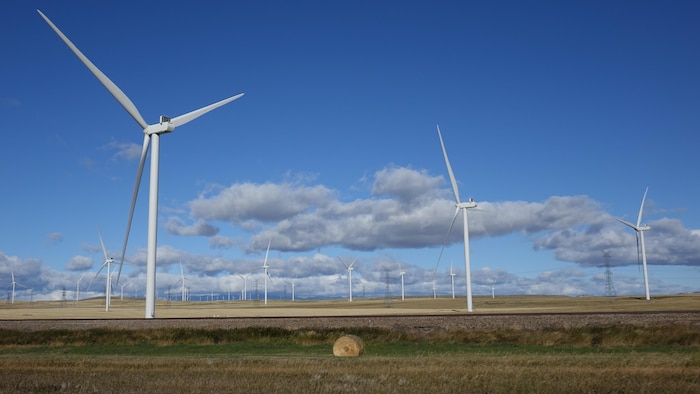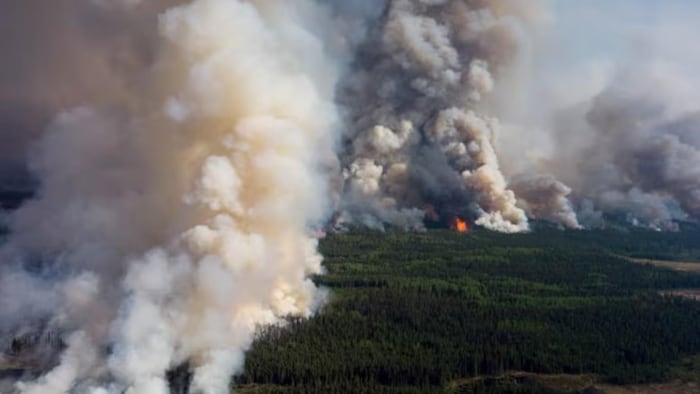Whether it is the incessant ballet of helicopters, road processions or thousands of people to feed, the G7 summit undoubtedly had an imprint on the environment. The carbon statement has not yet been carried out, but the federal government aspires that, after all its measures, the result is zero.
The five large white bags stored in the huge hangar of the company Eco-Growth, In Calgary, proof is that carbonutrality is not an easy objective.
These clusters of waste are the remains of meals coming from the only media center which was located in Banff. An even greater number will arrive, in the coming days, from other places of meeting at the summit.
It must be 400 to 500 kg
said the manager of daily operations, Glen Smithby designating a bag filled with intact rolls.

All this food waste comes from the center of the media which was located in Banff during the three days of meeting of the G7.
Photo: Radio-Canada / Tiphanie Roquette
Purely food waste is separated from plastic containers and paper towels.
The company dehydrates organic waste so that only fibers remain. This residue, which goes from yellow to dark brown according to food, resembles sawdust.
This fiber is dry. So we can burn it in our gasification boilers. We use it to heat the water of our laundry, we heat the building. We save almost $ 100,000 per year of fossil fuels
underlines Glen Smith.

This kind of sawdust is the residue of dehydration of food waste.
Photo: Radio-Canada / Tiphanie Roquette
Eco-Growth is also an industrial laundromat, a carpet cleaner and soon a modular farm. The water in the dehydration process is also recovered as a fertilizer, and the CO2 of the boilers is captured and added to water to replace certain chemicals of the laundromat.
Fiber is also transformed into granules which can be used as fertilizers for floors.
Paper waste undergoes the same treatment. As for plastic waste, it is shredded and dehydrated. Another company, Full Circle Plasticscollects them to transform them into a material similar to wood and then to external furniture.
In the end, there should not be one waste. Besides, we do not have a trash here because we reuse everything and we take advantage of everything.

Glen Smith shows the granules produced from organic waste. The company now produces more granules than what it needs and plans to sell them to farmers.
Photo: Radio-Canada / Tiphanie Roquette
Eco-Growth Placed three dehydrators and shredders in different places from the G7 summit to recover all the waste from this political meeting.
Everything will be weighed, counted and verified to determine the diverted kilos of the dumps and the emissions of avoided greenhouse gases. Eco-Growth accounts to indirect emissions, also called scope 3
.
Compensate for the rest of the emissions
Waste management is however only part of the carbon footprint of the G7 summit. To reach carbonutrality, the federal government will undoubtedly have to buy carbon credits of projects that reduce greenhouse gas emissions.
Ottawa did not respond to our requests for information on the calculation of carbon emissions. Upstream of the summit, the federal government, however, has mandated a team from the University of Calgary to establish guidelines on emission compensation.

The federal government could buy carbon credits from wind facilities for example.
Photo: Radio-Canada / Tiphanie Roquette
In Alberta alone, 400 projects offer carbon credits, explains Getachew Assefaprofessor of sustainable design at the University of Calgary.
We must also look at projects from an environmental, social and economic point of view. We can have a good environmental solution, but which has no sense on the social level
explains Mr. Assefa, whose report is scheduled for September.
He will advise for example to the federal government if it should favor the credits issued in Alberta, since the summit was happening there, or if indigenous projects should be privileged.
These are enormous political and economic encounters, but it is important to give them a prospect of environmental sustainability
said the one who did a similar job for the Beijing Olympic Games in 2008.
The magnitude, the consistency, the uniformity are not yet there. It is therefore interesting that the Government of Canada explores this idea and, with a little luck, it will become the norm for this kind of summit.
The tree that hides the forest
Stephen Legault, d’Environmental Defencehowever, believes that the G7 summit remains A missed opportunity
.
Far from him the idea of criticizing the aspirations of carbonutrality, but he rather judges the content of the discussions to meet.
There is a whole list of political decisions which should be examined according to the energy transition and decarbonation. After, if we want to make sure that coffee served has carbon compensation, so much the better
he explains.

The only explicit mention of the environment at the 2025 G7 summit concerned the forest fires.
Photo: Radio-Canada / Forest Fire Service in British Columbia
Several organizations have criticized the fact that climate change has not been part of Canada’s priorities at this G7 summit, unlike previous meetings.
Glen Smith, d’Eco-Growth, However, finds positive in its collaboration with the summit.
We need people to care about it and act
he said. It is sure that it is not fast enough, but we are optimistic.

